Artificial Cardiac Pacemaker: Insights into Modern Care
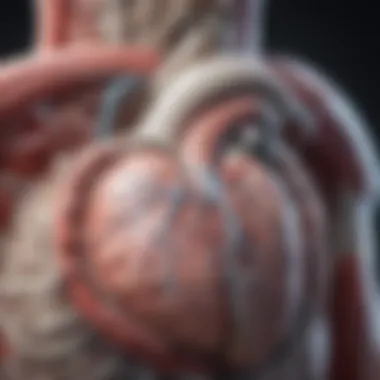
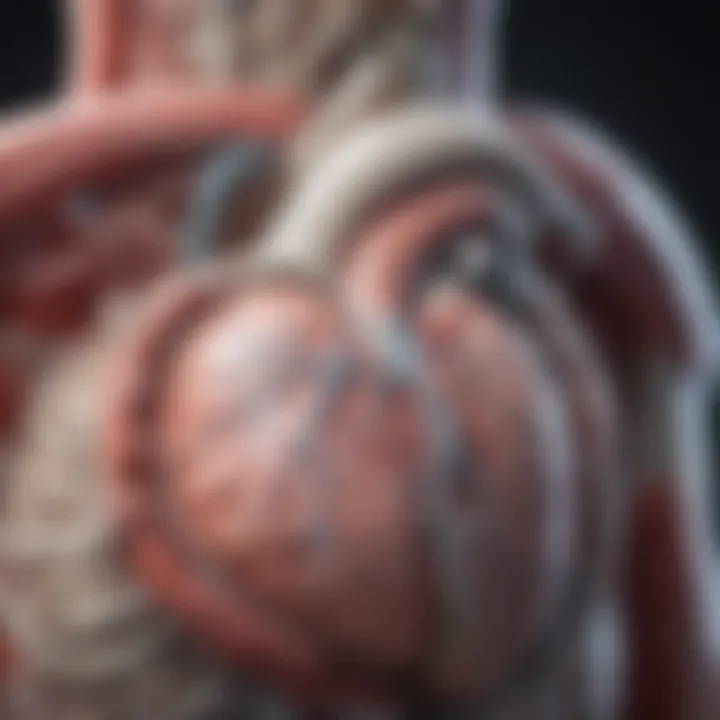
Intro
Artificial cardiac pacemakers represent a pivotal advancement in the field of cardiac care, significantly improving the quality of life for patients with arrhythmias. These devices regulate heartbeats when the heart's natural pacemaker, the sinoatrial node, fails to function properly. With a blend of intricate engineering and sophisticated technology, pacemakers have evolved to meet the diverse needs of patients and healthcare practitioners alike.
In this article, we will delve into the complex design and functionality of artificial cardiac pacemakers. We aim to shed light on the physiological mechanisms that underlie heart rhythm control and examine the technological innovations that have enhanced pacemaker efficiency. Furthermore, we explore the clinical applications of these devices and the challenges encountered by patients and healthcare professionals in managing cardiac rhythm disorders.
The analysis presented here will serve as a valuable resource for students, researchers, educators, and healthcare practitioners. By unpacking various aspects of pacemakers, we hope to promote a deeper understanding of this transformative technology and its implications in modern cardiology.
Methodology
Overview of Research Methods Used
To compile this comprehensive insight into artificial cardiac pacemakers, a multi-faceted research methodology was employed. This involved both qualitative and quantitative approaches. Reviews of existing literature provided a solid foundation for understanding the current landscape of pacemaker technology and its clinical significance. Peer-reviewed journals, clinical studies, and expert opinions were integral to this process.
Furthermore, interviews with cardiologists and healthcare professionals supplemented the existing knowledge and offered practical perspectives on the implementation and management of artificial cardiac pacemakers. This combination of theoretical and practical insights ensures a well-rounded analysis.
Data Collection Techniques
Data for this study was collected through various channels:
- Literature Review: Analysis of scholarly articles, clinical guidelines, and textbooks related to cardiac device technology.
- Surveys and Interviews: Engaging with healthcare professionals to gather firsthand accounts of pacemaker usage and patient outcomes.
- Clinical Case Studies: Examination of specific patient cases to illustrate the practical applications of pacemakers in diverse settings.
The synthesis of these data collection techniques provides a comprehensive understanding of pacemaker functionality and its implications in modern cardiac care.
Prelims to Artificial Cardiac Pacemakers
The significance of artificial cardiac pacemakers in modern medicine cannot be overstated. They play a crucial role in managing various heart rhythm disorders that can lead to serious complications. The understanding of how pacemakers function and their clinical implications is vital for healthcare professionals, researchers, and students engaged in the field of cardiology.
Artificial cardiac pacemakers are devices that help to regulate the heartbeat. They provide electrical stimuli to heart muscles, ensuring that the heart beats in a coordinated and effective manner. This technology is especially important for patients suffering from bradycardia, heart block, or other arrhythmias. The success of this intervention can greatly enhance the quality of life and prolong survival in many individuals.
Several considerations must be taken into account when discussing the purpose and design of pacemakers. From the basic definition to the complex functioning of these devices, their evolving designs reflect advances in medical technology. The historical context of pacemakers shows a remarkable journey from simple mechanical devices to sophisticated electronic frameworks that can adjust according to a patient's unique physiology.
Definition and Purpose
An artificial cardiac pacemaker is defined as a device that delivers electrical impulses to the heart muscles. Its main purpose is to maintain an adequate heart rate when the intrinsic conduction system is unable to do so. Generally, the pacemaker consists of two main components: a pulse generator and leads. These elements work together to sustain normal cardiac rhythms, preventing symptoms such as fatigue, fainting, and even life-threatening conditions.
The prevalence of conditions that necessitate pacemaker implantation, such as sick sinus syndrome and various degrees of heart block, underscores the device’s importance. Patients with these conditions often experience significant clinical features that can impair their quality of life. A pacemaker can be lifesaving, reflecting its essential role in contemporary cardiac care.
Historical Development
The history of artificial cardiac pacemakers is a testament to medical innovation. The first external pacemaker was developed in the year 1950 by Dr. Paul Zoll. This device was bulky and required a connected power source. Subsequent advancements led to the creation of the first implantable pacemaker by Dr. Ake Senning in 1958, which was a groundbreaking moment in cardiology.
In the decades that followed, pacemaker technology evolved rapidly. Battery life improved, and the devices became more sophisticated. The introduction of programmable pacemakers in the late 20th century allowed customization based on each patient’s needs. Today’s devices are often equipped with features such as rate modulation, telemetry capabilities, and even the ability to synchronize with the patient's activity levels.
"The journey of pacemaker technology reflects a continuous quest for better heart health, transforming lives through innovation."
This historical perspective enriches the understanding of pacemakers as not merely tools, but sophisticated components of comprehensive cardiac care. As medical practitioners and researchers explore future directions for pacing technologies, the historical context serves as a foundational pillar for ongoing advancements.
Physiology of the Heart
The physiology of the heart is foundational to understanding artificial cardiac pacemakers. This section dissects the mechanisms behind heart function, specifically how signals are transmitted through the heart, and how this influences the use of pacemakers in clinical settings. Grasping these principles is crucial for students, researchers, and professionals, who must appreciate not only the technology itself but also the biological systems it aims to support.
Normal Cardiac Conduction System
The heart's normal cardiac conduction system operates through a series of specialized cells that generate and propagate electrical impulses. This system ensures that the heart beats in a coordinated manner. The primary components include the sinoatrial (SA) node, atrioventricular (AV) node, bundle of His, and the Purkinje fibers.
- Sinoatrial Node: Often termed the natural pacemaker, the SA node is responsible for initiating the electrical impulse that starts each heartbeat. This impulse causes the atria to contract, pushing blood into the ventricles.
- Atrioventricular Node: Following the SA node, the impulse reaches the AV node, which serves as a gateway, briefly delaying the signal before passing it into the ventricles. This delay is necessary as it allows for the ventricles to fill with blood.
- Bundle of His and Purkinje Fibers: From the AV node, the signal travels through the bundle of His and then into the Purkinje fibers. These fibers distribute the impulse throughout the ventricles, prompting them to contract and eject blood to the lungs and the rest of the body.
Understanding this pathway is essential for healthcare practitioners. Disruptions to this system, be it due to heart disease or congenital defects, can lead to arrhythmias, among other complications, necessitating pacemaker interventions.
Pathophysiology of Arrhythmias
Arrhythmias arise when there is a disturbance in the electrical conduction system of the heart. These disturbances can result from various factors, including myocardial ischemia, electrolyte imbalances, and structural heart changes. The consequences of such arrhythmias can be severe, ranging from palpitations to sudden cardiac arrest.
Some key types of arrhythmias include:
- Bradycardia: A condition where the heart beats slower than normal, often requiring pacemaker support to maintain adequate heart rate.
- Tachycardia: An abnormally fast heart rate which can compromise cardiac output and lead to cardiovascular instability.
- Fibrillation: A chaotic electrical activity that impairs the heart's ability to pump effectively.
The understanding of arrhythmias’ pathophysiology directly informs the use of artificial pacemakers. These devices are designed to restore effective heart rhythm in cases where the natural pacing is absent or insufficient.
A comprehensive grasp of the normal cardiac conduction system and pathophysiology of arrhythmias allows for appropriate application of artificial pacemakers, significantly raising patient quality of life.
Types of Cardiac Pacemakers
Understanding the different types of cardiac pacemakers is essential for appreciating their roles in modern cardiac care. Each type addresses specific medical needs, tailored to the individual patient's requirements. The selection of a pacemaker type is critical, depending on the nature of the arrhythmia and the patient's overall health condition. Properly deployed, cardiac pacemakers can enhance the quality of life significantly, reducing symptoms associated with heart rhythm disorders.
Temporary Pacemakers
Temporary pacemakers are often utilized in acute settings where immediate pacing is necessary. They serve as a short-term solution for patients experiencing severe bradycardia or heart block. The placement can be either transvenous or transcutaneous.
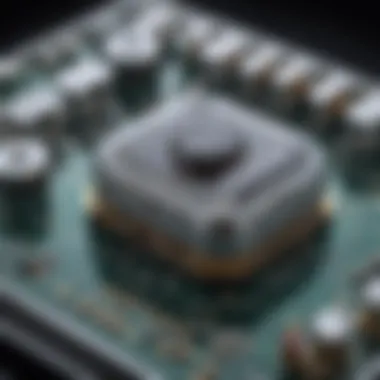
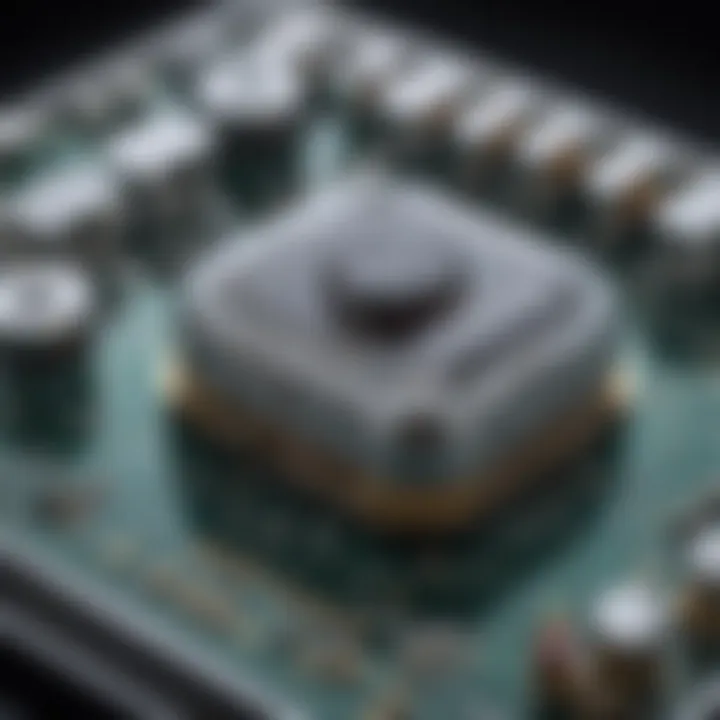
- Transvenous pacemakers are inserted into a vein and threaded to the heart, allowing for stable pacing.
- Transcutaneous pacemakers are applied externally, delivering pacing impulses through the skin. This method is typically used in emergency situations, where rapid intervention is crucial.
Temporary pacemakers provide invaluable support but are not designed for long-term use. They often come with risks such as infection or discomfort. Hence, their application is usually a stop-gap measure until more permanent solutions can be established.
Permanent Pacemakers
Permanent pacemakers are designed for ongoing cardiac support. They are implanted in patients with chronic conditions that necessitate long-term pacing. The procedure to implant these devices is generally performed in a surgical setting, requiring the patient to undergo specific preoperative assessments.
There are various models of permanent pacemakers, and features can vary significantly based on the specific needs.
- Single-chamber pacemakers stimulate either the right atrium or the right ventricle.
- Dual-chamber pacemakers stimulate both chambers, allowing for greater synchronization and efficiency.
The primary advantage of permanent pacemakers lies in their design to function continuously, improving patient outcomes and restoring normal heart rhythms.
Dual-Chamber Pacemakers
Dual-chamber pacemakers bring forth enhanced functionality compared to their single-chamber counterparts. By pacing both the atrium and the ventricle, these devices allow for coordinated timing between the heart's upper and lower chambers. This coordination is crucial for maintaining efficient blood flow and optimizing cardiac performance.
In patients suffering from atrioventricular (AV) block, dual-chamber pacemakers offer a tailored solution. They adapt to the patient's needs as the heart rate fluctuates.
Furthermore, these devices can significantly improve symptoms related to heart failure and also reduce the risk of additional complications.
Biventricular Pacemakers
Biventricular pacemakers are a specialized lineage of cardiac pacing technology designed to treat a specific subset of patients. They are integral in managing heart failure, particularly in those with ventricular dysynchrony.
The term cardiac resynchronization therapy (CRT) encompasses biventricular pacing, which ensures correct timing of contractions in both the left and right ventricles.
Patients often experience substantial improvements in their symptoms, exercise capacity, and overall quality of life following implantation of a biventricular device. Furthermore, this approach can potentially lead to reduced hospitalizations associated with heart failure. The progressive nature of heart disease necessitates continuous adaptation of treatment strategies, and this type of pacemaker offers a promising avenue for many patients.
Components of a Pacemaker
Understanding the components of a pacemaker is crucial for appreciating its role in cardiac care. These devices consist of several essential elements, each contributing to the overall function of regulating heart rhythm. Knowledge of these components aids in grasping how artificial cardiac pacemakers enhance patient outcomes and manage heart conditions effectively.
Pulse Generator
The pulse generator is the core of a pacemaker. It produces electrical impulses that stimulate the heart to contract and maintain an appropriate rhythm. This small device is typically implanted under the skin, usually in the chest. One crucial aspect of the pulse generator is its programmable nature. Physicians can customize its settings based on the individual needs of each patient. This ensures optimal timing and strength of the electrical signals sent to the heart. Furthermore, advancements in technology have made pulse generators more efficient, often extending battery life and minimizing the need for replacement surgeries.
Leads
Leads are insulated wires that connect the pulse generator to the heart. Their function is to deliver the electrical impulses from the generator directly to the heart muscles. A well-designed lead is vital; it needs to be flexible enough to move with the heart while being durable to withstand the body’s conditions. Commonly, leads are classified into two types: active and passive fixation leads. Active fixation leads grip the heart tissue and secure their position. On the other hand, passive leads rely on tines or screws to maintain contact. The choice of leads can significantly affect the functionality of the pacemaker and the overall patient experience.
Electrodes
Electrodes are positioned at the tips of the leads and are responsible for transmitting electrical signals to stimulate the heart. These are critical because they ensure the effective delivery of impulses. The design of electrodes has evolved, with newer models featuring a variety of surfaces. Changes in surface characteristics enhance the electrode's ability to transmit signals and reduce the likelihood of complications. A well-functioning electrode can lead to improved heart function and a better quality of life for patients needing cardiac pacing.
The interplay between the pulse generator, leads, and electrodes forms the foundation of a pacemaker's operation, ensuring that patients experience consistent cardiac rhythms.
By understanding these components, one gains insights into both the technical aspects of pacemaker design and the clinical implications of their use. This knowledge lays the groundwork for appreciating advances in technology and offers hope for improved therapies in arrhythmias and related heart disorders.
Indications for Pacemaker Implantation
The decision to implant an artificial cardiac pacemaker is influenced by various medical indications. These include specific heart conditions, the patient's overall health, and the potential risks involved in the procedure. Understanding these indications is crucial for healthcare professionals, as it ensures that patients receive the most appropriate care. The primary goal of pacemaker implantation is to restore normal heart rhythm, thus alleviating symptoms related to bradycardia, heart block, and other cardiac arrhythmias.
Bradycardia Management
Bradycardia refers to a slower than normal heart rate, typically defined as less than 60 beats per minute. This condition can lead to fatigue, dizziness, and even syncope or fainting spells. In some individuals, bradycardia stems from intrinsic issues with the heart's conduction system. For others, it may be a result of certain medications or external factors.
A pacemaker helps manage bradycardia by sending electrical impulses to the heart, prompting it to beat at an appropriate rate. In clinical settings, patients who exhibit persistent symptoms of bradycardia, despite conservative management, are often candidates for pacemaker implantation. The timely intervention can significantly improve quality of life and decrease the risk of severe complications.
Heart Block Treatment
Heart block is characterized by the delayed transmission of electrical signals within the heart. It can be classified into three degrees, ranging from mild to severe. Patients with high-degree heart block may experience significant symptoms such as palpitations, shortness of breath, and fatigue. In cases of complete heart block, the heart cannot effectively coordinate contractions, resulting in dangerous bradycardia.
Indications for pacemaker implantation in patients with heart block include symptomatic bradycardia and high-degree block, particularly if the patient shows signs of impaired hemodynamic performance. The device takes over the role of the damaged conduction pathways, ensuring that the heart maintains a steady rhythm. This treatment helps avoid potential life-threatening situations associated with heart block.
Atrial Fibrillation and Heart Failure
Atrial fibrillation is a common arrhythmia that can lead to stroke and other complications. While many patients manage it with medications, others may develop a condition where their heart rate becomes dangerously slow. In such cases, pacemakers may be indicated, especially in patients who also suffer from heart failure.
Heart failure entails that the heart is unable to pump efficiently, leading to a variety of symptoms including fatigue, fluid retention, and shortness of breath. The link between atrial fibrillation and heart failure can complicate treatment choices. A pacemaker may help stabilize heart rhythm in these patients, providing essential support. Studies show that when atrial fibrillation and heart failure coexist, pacing strategies may lead to better outcomes and improved functional status.
The placement of a cardiac pacemaker can profoundly change the life of a patient suffering from bradycardia, heart block, or complicated arrhythmias, ensuring safety and improving overall heart function.
The precise indications for pacemaker implantation rely on thorough evaluation and careful consideration of individual patient profiles. This approach ensures optimal outcomes and reduces potential risks related to cardiac interventions.
Procedures for Pacemaker Insertion
The insertion of a pacemaker is a critical procedure in modern cardiac care. It requires meticulous planning and skilled execution due to the intricacies involved. When managing cardiac rhythm disturbances, understanding the procedures ensures optimal outcomes for patients. The successful insertion of a pacemaker can significantly improve the quality of life for individuals suffering from arrhythmias and related conditions. Thus, discussing the steps involved—from preoperative assessment to postoperative care—is essential.
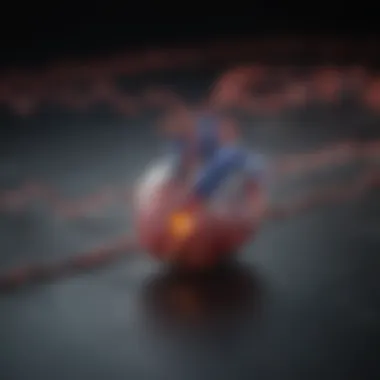
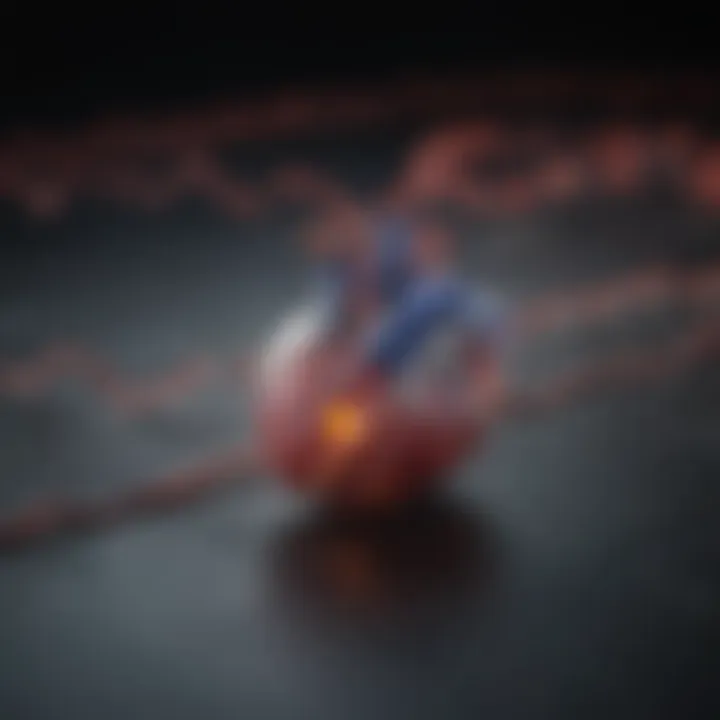
Preoperative Assessment
Before a pacemaker insertion, a thorough preoperative assessment is vital. This step helps in evaluating the patient’s overall health and readiness for the procedure. Important elements of assessment include:
- Medical History Review: The physician must understand the patient's past & present health conditions, medications, and any previous cardiac interventions. This helps evaluate risks associated with the procedure.
- Physical Examination: This involves assessing the patient’s cardiovascular status. Clinicians check for signs of heart failure, infection, or other complications that may affect the surgery.
- Electrocardiogram (ECG): An ECG will provide information about the heart's electrical activity, aiding in determining the need for a pacemaker.
- Imaging Studies: Chest X-rays or echocardiograms may be performed to assess heart anatomy and function.
- Laboratory Tests: Blood tests can identify underlying health issues such as anemia or electrolyte imbalances.
Ensuring a comprehensive preoperative assessment enables healthcare providers to make informed decisions and anticipate potential challenges during the surgery.
Surgical Techniques
Following a successful preoperative assessment, the focus shifts to the surgical techniques employed during pacemaker insertion. Different methods can be used, but the most common include:
- Transvenous Pacemaker Insertion: This is often done in a hospital setting using local anesthesia. A lead is advanced through a vein to the heart, where it's positioned in the right atrium or ventricle. The pulse generator is usually placed under the skin in the chest.
- Epicardial Approach: This technique is less common but may be used in certain patients, particularly in the setting of heart surgery. Leads are attached directly to the heart surface during procedures.
- Subcutaneous Pacemaker Insertion: A newer approach involves placing the entire pacemaker under the skin without leads that enter the heart directly, potentially reducing complications.
Each technique has its indications, advantages, and risks. The choice of method depends on the patient's specific condition, anatomy, and healthcare provider's expertise.
Postoperative Care
Postoperative care plays an indispensable role after the pacemaker insertion. It helps ensure proper recovery and device function. Key elements of postoperative care include:
- Monitoring: Continuous monitoring of the patient’s heart rhythm is crucial for detecting any immediate complications, such as lead dislodgment or infection.
- Pain Management: Effective pain control measures should be implemented to enhance patient comfort during recovery.
- Activity Restrictions: Patients are usually advised to limit physical activity, especially upper body movements, for a specified period to allow for proper healing.
- Follow-Up Appointments: Regular follow-ups are essential to check pacemaker function and assess the patient’s health status.
- Patient Education: Providing information about signs of complications, such as redness or swelling at the insertion site, is critical for patient awareness.
In summary, the procedures surrounding pacemaker insertion encompass several critical stages. This detailed approach ensures a successful outcome and promotes the patient’s long-term health. A well-informed process from assessment to postoperative care minimizes risks and maximizes the potential benefits of this life-saving device.
Complications Associated with Pacemaker Use
Understanding the complications associated with pacemaker use is pertinent for both healthcare providers and patients. While pacemakers significantly improve the quality of life for individuals with rhythm disorders, they also pose certain risks that must be managed. Awareness of these complications allows for better preoperative counseling, informed decision-making, and ongoing monitoring. This section will discuss the primary complications including infection risk, lead dislodgment, and pacemaker malfunction.
Infection Risk
Infections represent one of the most common complications following the implantation of a cardiac pacemaker.
- Incidence Rate: Research indicates that the risk of infection can range from 1% to 5% post-implantation. Factors such as surgical technique and patient health significantly influence this risk.
- Presentation: Symptoms often include redness, swelling, warmth at the site of implantation, fever, and sometimes purulent discharge.
- Management: Treatment involves the use of antibiotics, and in severe cases, the removal of the pacemaker may be required.
- Preventive Measures: To minimize infection risk, healthcare teams often follow strict aseptic protocols during the procedure. Preoperative antibiotics may also be administered to reduce potential bacterial colonization.
Lead Dislodgment
Lead dislodgment is another complication that may compromise the pacemaker’s functionality.
- Definition: Lead dislodgment occurs when the pacing leads are incorrectly positioned or shift from their original placement within the heart.
- Causes: Factors contributing to lead dislodgment can include excessive patient movement, inadequate fixation during surgery, or physiological changes in the patient.
- Symptoms: Patients might experience symptoms such as palpitations, syncope, or inadequate pacing resulting in bradycardia.
- Resolution: Management generally involves re-evaluating the lead position through imaging techniques and, if necessary, a surgical procedure to reposition or replace the leads.
Pacemaker Malfunction
Pacemaker malfunction, though less common, can have critical implications for patient safety and treatment efficacy.
- Types of Malfunction: This includes battery depletion, lead fracture, and sensing or pacing failure. Each of these types can lead to inadequate heart rhythm management.
- Signs: Patients may exhibit signs such as intermittent dizziness or fatigue. Regular patient monitoring is essential to catch issues early.
- Corrective Actions: When a malfunction is detected, intervention may include battery replacement or device reprogramming. In severe cases, complete device replacement may be warranted.
Key takeaway: Awareness and proactive management of these complications are essential for optimizing patient outcomes with artificial cardiac pacemakers. Regular follow-up care for patients can help mitigate these risks, ensuring efficient and safe use of the device.
The risks associated with artificial cardiac pacemakers highlight the complexities involved in managing patients with heart rhythm disorders. By thoroughly understanding these complications, healthcare providers can improve patient care and outcomes.
Technological Innovations in Pacemakers
Technological advancements in pacemaker design are continually reshaping the landscape of cardiac care. These innovations enhance patient outcomes and improve the device's adaptability to individual needs. Understanding these developments is crucial for practitioners and researchers alike, as they directly influence treatment efficacy and patient quality of life.
Miniaturization of Devices
The trend towards smaller pacemakers is significant. Miniaturization has resulted in devices that are less invasive and more comfortable for patients. A key example includes devices like the Medtronic Micra, which is small enough to be delivered via a catheter, eliminating the need for surgical pocket creation. This reduces complications and promotes quicker recovery.
Furthermore, smaller devices can follow cardiac rhythms more accurately due to their proximity to the heart. As a result, patient monitoring becomes less obtrusive while still developing reliable data.
MRI-Compatible Pacemakers
The advent of MRI-compatible pacemakers marks a cornerstone in the realm of diagnostic imaging for patients with cardiac implants. Traditionally, patients with pacemakers avoided MRI scans due to risks of malfunction. With the introduction of MRI-safe devices like the Boston Scientific Ingenio, patients can now undergo necessary scans, ensuring comprehensive evaluation of associated health issues.
This development also speaks to the increasing need for multidisciplinary approaches in patient care. Surgeons, radiologists, and cardiologists must work together to manage the complexities of these devices effectively, improving overall treatment pathways.
Leadless Pacemakers
Leadless pacemakers are a groundbreaking advancement in cardiac pacing technology. Unlike traditional pacemakers, which use leads to connect the device to the heart, leadless versions, such as the Abbott Aveir, are implanted directly into the heart chamber via a catheter. This eliminates lead-related complications, such as dislodgment or infection.
Leadless designs also enhance aesthetic outcomes for patients, as there is no visible pacemaker pocket. They provide a renewed sense of normalcy for many patients, eliminating concerns about visible devices under the skin.
In summary, the innovations in pacemaker technology reflect a broader commitment to patient-centered care in cardiology. As these devices evolve, they offer increased safety, comfort, and efficiency, ultimately promising a better quality of life for those dependent on them.
"Technological advances in pacemakers not only aid in heart rhythm management but also shape the future of how we approach cardiac care."
Monitoring and Follow-Up Care
Monitoring and follow-up care are critical components in the management of patients with artificial cardiac pacemakers. Proper monitoring ensures that the device remains functional and effectively supports the heart's rhythm. Regular checkups, patient education, and advancements in remote monitoring help both patients and healthcare providers observe the ongoing performance of pacemakers while also addressing any emerging complications.


Given the nature of pacemakers and their role in maintaining heart stability, routine and thorough evaluations can identify anomalies early. This proactive approach enhances patient safety and can significantly improve quality of life.
Routine Checkups
Routine checkups are essential after the implantation of a pacemaker. These appointments allow healthcare providers to assess the device's function and the patient's overall heart health. Routine monitoring includes evaluating battery life, lead integrity, and the frequency of pacing.
During these visits, clinicians may utilize specialized equipment to conduct checks. These tests can determine whether the pacemaker is pacing appropriately, and any inconsistencies can be quickly addressed.
Common activities during routine checkups include:
- Device interrogation: Healthcare professionals use a programmer to retrieve data from the pacemaker, providing insights into the pacing and any recorded arrhythmias.
- Physical examination: This includes observing for signs of complications or infections at the implantation site and assessing the patient’s overall health and response to the device.
Overall, routine checkups are vital since they help in ensuring long-term pacemaker function and monitoring any changes in the patient's condition, which could necessitate adjustments in therapy.
Patient Education
Patient education plays a vital role in the successful management of artificial cardiac pacemakers. Providing clear and concise information empowers patients to understand their condition and the importance of adhering to follow-up care.
Key aspects of patient education include:
- Understanding the device: Patients should know how their pacemaker works, including common functions and settings.
- Recognizing symptoms: Teaching patients to identify signs of malfunction such as dizziness, syncope, or unusual sensations can lead to prompt medical intervention.
- Lifestyle modifications: Guidance on activities, travel considerations, and any restrictions post-implantation is important for optimal health outcomes.
Moreover, educated patients are better equipped to maintain their devices through healthy lifestyle choices, which may further prevent complications and improve overall pacing outcomes. It strengthens the patient-provider relationship as well, fostering trust and compliance.
Remote Monitoring Systems
Advancements in technology have led to the development of remote monitoring systems, which provide a higher level of care for patients with pacemakers. These systems enable healthcare providers to monitor patients’ devices and data from afar, reducing the necessity for frequent in-office visits.
Key features of remote monitoring include:
- Automatic data transmission: Pacemakers can send data on their function directly to healthcare teams, alerting them to any issues or changes that may require intervention.
- Real-time alerts: When a problem is detected, such as lead dislodgment or battery depletion, healthcare practitioners can promptly reach out to the patient.
- Convenience for patients: Patients benefit from less travel and time away from daily activities while still receiving comprehensive oversight of their heart health.
Ethical Considerations in Pacemaker Use
Artificial cardiac pacemakers play a critical role in managing arrhythmias and maintaining heart function. However, the implantation and use of these devices raise numerous ethical considerations that deserve thorough exploration. This section delves into key elements such as informed consent and end-of-life decisions, emphasizing their importance in ensuring patient autonomy and dignity within the rapidly evolving realm of cardiac care.
Informed Consent
Informed consent is a fundamental principle in medical ethics and particularly significant when discussing pacemaker implantation. Patients must have a clear understanding of the procedure, the associated risks, benefits, and potential alternatives. This ensures that they can make educated decisions about their health.
- Transparency: Healthcare professionals must provide clear and comprehensive information about how a pacemaker functions. This includes the potential benefits, such as improved quality of life and reduced symptoms of arrhythmia, as well as the risks, including infection or complications from the surgery.
- Assessing Competence: It's vital to evaluate the patient's capacity to give consent. Factors such as mental state, age, and comprehension should be considered.
- Cultural Sensitivity: Recognizing the diverse backgrounds of patients is essential. Some may have cultural beliefs that impact their choices regarding medical interventions, which practitioners should respect and accommodate.
The consent process should not be a mere formality. Engaging in a supportive dialogue allows patients to ask questions and voice concerns. This approach fosters trust and promotes a more ethical practice of medicine.
End-of-Life Decisions
Considering the role of pacemakers in end-of-life situations is crucial. Decisions regarding the continuation or cessation of pacemaker therapy can be complex, involving both ethical considerations and patient wishes.
- Patient Autonomy: Respecting a patient's preferences in their end-of-life care is paramount. These decisions often reflect the individual's values and beliefs. When a patient approaches the end of life, discussions about whether to maintain or deactivate the pacemaker should involve sensitive communication.
- Quality of Life: The focus should shift from longevity to the quality of life. Patients with terminal conditions may wish to avoid aggressive treatment, preferring comfort measures instead. Understanding this can help healthcare providers support their choices effectively.
- Family Involvement: In some cases, families may play a significant role in decision-making, especially when the patient is unable to communicate their wishes. Balancing familial input while honoring the patient's desires presents its own complexities.
Future Directions in Cardiac Pacing
As technology rapidly evolves, the field of cardiac pacing is on the cusp of transformative advancements. Future directions in cardiac pacing will shape how healthcare professionals manage patients with arrhythmias. The integration of innovative materials and smart technology must be understood to improve device performance and patient outcomes. These advancements are critical not only for enhancing the therapeutic capabilities of pacemakers but also for minimizing complications and improving the quality of life for patients.
Advancements in Biomaterials
In recent years, there has been significant focus on advancements in biomaterials for cardiac pacemakers. Specifically, materials that reduce the risk of fibrosis and inflammation are being developed. These materials can enhance biocompatibility, which is crucial in ensuring that patients do not experience unexpected complications from their devices.
- Silicone and polyurethane are two prominent materials used due to their excellent flexibility and durability.
- Emerging materials like bioactive glass have shown promise in facilitating better integration with cardiac tissue, potentially improving the long-term outcomes of pacemaker implants.
Clinicians need to be aware of these developments. Incorporating new biomaterials could lead to longer-lasting devices and reduced need for replacements. Researchers are focused on personalized biomaterial options tailored to individual patients' needs, which could revolutionize the approach to cardiac pacing.
Integration with Artificial Intelligence
The integration with artificial intelligence is another frontier that holds immense potential in cardiac pacing. AI can play a crucial role in monitoring patients and adjusting pacemaker settings in real time. This adaptability can lead to optimized pacing therapy tailored to individual patterns of activity and heart function.
- AI algorithms can analyze data from devices using machine learning techniques to predict and respond to arrhythmias effectively.
- Utilizing AI can also lead to enhanced decision-making, allowing healthcare providers to detect abnormalities before they escalate into serious complications.
The future will likely see AI systems that can communicate with patients' smartphones, providing real-time updates and alerts for any irregularities. As these technologies become more integrated, the synergy between AI and pacemaker technology will redefine patient care.
"With advancement in materials and the introduction of AI, the future of cardiac pacing can improve patient outcomes dramatically."
The End
The conclusion serves as a crucial component of this article, encapsulating the essential insights and discussions about artificial cardiac pacemakers. It synthesizes the vast array of information laid out in preceding sections, focusing on the complexities and advantages of these devices in cardiac care.
Summary of Key Points
- Definition and Role: Artificial cardiac pacemakers are devices that correct arrhythmias by delivering electrical impulses to the heart, ensuring its proper functioning.
- Types of Pacemakers: There are various types, including temporary and permanent pacemakers, each serving different medical needs. Moreover, advances such as dual-chamber and biventricular pacemakers offer tailored solutions for complex cases.
- Technological Innovations: Advances in technology, such as miniaturization and the development of leadless pacemakers, optimize patient outcomes and comfort.
- Complications and Considerations: While generally safe, complications like infection or lead dislodgment remain concerning for patients and medical professionals.
- Ethical Considerations: Informed consent and end-of-life discussions are paramount when utilizing pacemakers, as some patients may face difficult choices regarding treatment options.
Implications for Future Research
The landscape of cardiac pacing is dynamic, prompting ongoing research in several critical areas:
- Biomaterials: Future directions include the exploration of advanced biomaterials aimed at enhancing device longevity and compatibility with the human body.
- Artificial Intelligence Integration: Incorporating AI into monitoring systems may allow for predictive diagnostics and better patient management, aligning treatment with real-time data.
By understanding these factors, the medical community can enhance patient care, address safety concerns, and innovate further in the field of cardiac rhythm management. The evolving nature of pacemakers not only highlights their significance in medical practice but also cements their place in future cardiology developments.







